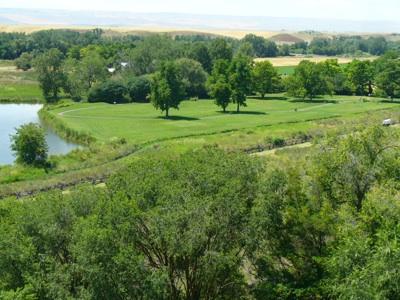Editor's note: David and Kay Scott this summer are living what many of us wish we could do: they're following a meandering path across the country to visit units of the National Park System. This installment of their trek comes from southeastern Washington, where they came upon an interesting 19th century mission.
Greetings from Whitman Mission National Historic Site, a relatively small National Park System unit located a few miles west of Walla Walla, Washington. One of the rangers estimated the site welcomes about 50,000 visitors annually.
It is a warm Saturday afternoon in southeastern Washington. Washington represents the 18th state through which we have passed during this trip that currently totals 4,400 miles since leaving our home in Valdosta, Georgia. We are beginning the sixth week on the road. Oregon and Washington are the first states where we have encountered gasoline selling for over $3.00 per gallon.
Marcus Whitman was a Presbyterian medical doctor who came west in 1836 to begin a mission for the Cayuse Indians. Whitman was accompanied by his wife, Narcissa, another couple, and a friend. The two women were the first white females to cross the continent overland. Fortunately for all of us, Narcissa was a prodigious writer of letters so that historians were able to gain great insight into life here.
Whitman traveled back to Boston in 1842 when the mission board decided to close two of the four missions that had been established. Whitman was successful in convincing board members to reverse their decision, whereupon he returned west the following year, while leading the first large wagon trains beyond Fort Boise on the Oregon Trail.
Unwilling to change their nomadic life for agriculture, and decimated by several diseases including measles, the Cayuse eventually rebelled. In 1847 a group of Cayuse killed Whitman, his wife, and 11 other white men at the mission.
Although none of the original buildings remain, the foundations have been identified and marked with cement bricks. Each of the buildings is described on markers placed along a walking trail through the site. A monument to Whitman, constructed 50 years following his death, is on a hill overlooking the site of the early mission. For a view of the grounds where the buildings once stood, view our video.
Although emigrants along the Oregon Trail once passed by the mission, it was later bypassed to the south and there is no trace of the original ruts. The park includes reconstructed ruts along a route thought to be near the original trail.
Following our last note from the town of Baker City, Oregon, we drove north toward the town of La Grande. Rather than take the direct route along I-84 that follows closely along the old Oregon Trail, we swung northeast on a scenic road that led past Catherine Creek, a small Oregon state park with camping facilities. Although considered primitive by the state (no hookups or showers), we found the campground to be delightful with many large pine trees, a treat for two people who had spent several weeks camping across the plains.
After a quiet night, we drove through the town of La Grande and returned to I-84 to gain access to the National Forest Service Oregon Trail Interpretive Center. Unlike the elaborate BLM interpretive center near Baker City, the Forest Service center north of La Grande offers a more intimate encounter with the trail.
There are no videos, living history demonstrations, or major exhibits. The center gets few visitors, but the opportunity to walk a trail beside the clearly visible swale of the Oregon Trail is quite a treat. There are no ruts, for grass, weeds, and trees have grown at this high elevation where moisture is more plentiful. However, the swale is quite impressive and easily identifiable. The walk beside it is marvelous. View our video of the swale at this site.
Further up the road we stopped at Emigrant Springs State Park and considered overnight in the tent, but it was still early afternoon and we wanted to get to Pendleton and take a 3 p.m. guided tour of the famed woolen mill. We arrived in time for the tour but underestimated the temperature we would encounter after driving out of the mountains. It was hot, hot, hot in Pendleton Too hot for camping, so after the mill tour we opted for a motel.
We will now head across northern Oregon toward The Dalles where the emigrants had to decide whether to float the treacherous Columbia River, or head south and around towering Mount Hood. Each alternative brought danger and hardship so the choice was difficult.
David and Kay Scott are regular contributors to the Traveler. Their book, The Complete Guide to the National Park Lodges was first published by the Globe Pequot Press in 1997 and is now in its sixth edition.


 Support Essential Coverage of Essential Places
Support Essential Coverage of Essential Places







Comments
Welcome to Pendleton! I hope you also got to take the Underground Tour where the Chinese laborers had to live and where the saloons were located during prohibition. It also includes a tour through a former bordello that operated into the 1950's! The September Roundup is the 5th largest rodeo in North America and will be celebrating its 100th Anniversary this year. Also, the Umatilla Indian Reservation just East of Pendleton has one of the finest museums of Native American history in the US, as vouched for by Michael Martin Murphy of "Geronimo's Cadillac" fame.